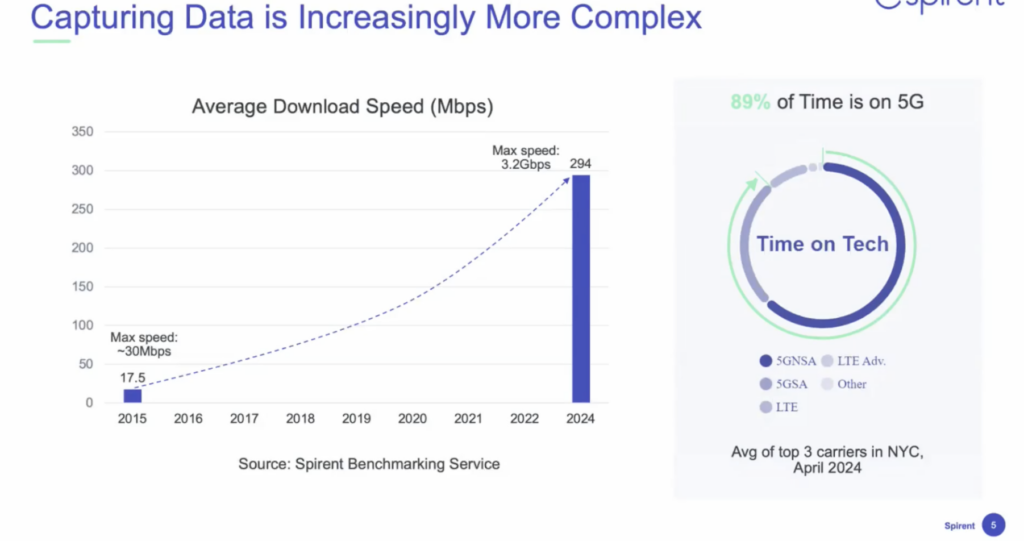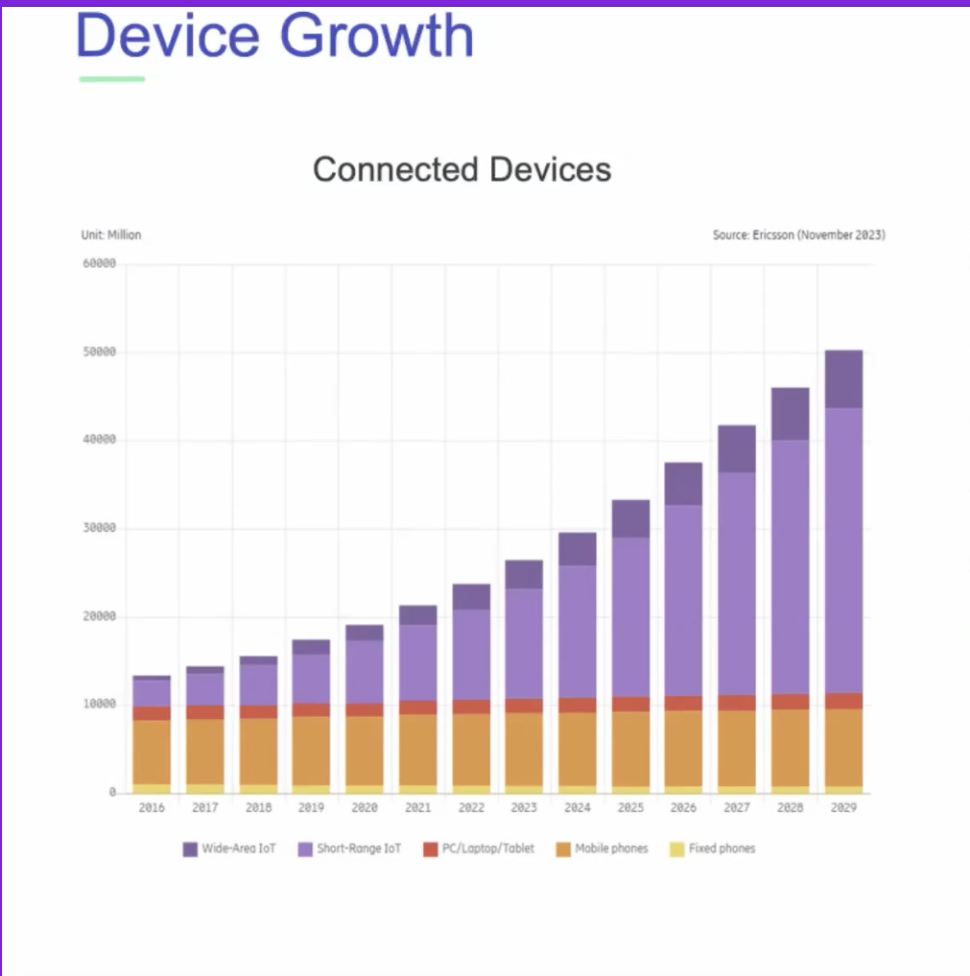Spirent is already taking steps to automate service assurance in carrier networks
At the recent Test & Measurement Forum, Spirent Communications Senior Director of Assurance Strategy Ross Cassan laid out key networking trends that are impacting service assurance and how the company is amending its strategy to address them.
Expansion and evolution of 5G
Massive investments in 5G and the recent roll out of mid-band spectrum in the U.S., said Cassan, are leading to notable increases in network performance, and while this is great news for network users, it presents a new challenge for those responsible for testing and validating the network.

Cassan shared a graph, which showed that in in 2015, Spirent recorded an average speed of 17.5 mbps and a maximum speed of 30 mbps in a live network. Next he pointed to a test that the company ran in late April in Manhattan. “We’re seeing an average of almost 300 mbps across all three major carriers [and a] max speed of 3.1 gbps,” he said of the new test results, adding further that 89% of the testing done was on 5G.
“The impact that this going to have for assurance is just a lot more devices and a lot more traffic on the network and the strategy that we use for assurance is going to have to adapt to that,” he continued. “The old strategy of capturing and tapping every bit isn’t going to fly with these types of increases.”
5G monetization driving new use cases
Cassan presented a growth chart detailing the prevalence of connected devices from 2016 to 2029. 5G, he said, isn’t just about improving the consumer mobile experience; it’s about introducing next-generation services and has a focus on enterprise use cases.
“The growth is not really in consumer services,” he pointed out, reverencing the graph. He noted that smartphones, PC and laptop growth has remained “relatively stable,” while enterprise devices like those designed for machine communication and IoT devices have experienced significant growth over the last few years.

“We see a lot of potential for new services and a lot of these types of services will depend on the network delivering on an SLA,” he said. Therefore, companies like Spirent are tasked with assuring specific network requirements like latency loss or throughput for the first time.
Network automation and optimization
“As were moving to O-RAN, we are moving the mobile functions to private clouds and sometimes even public cloud but running on dedicate compute infrastructure,” explained Cassan. As such, Spirent is looking to leverage service assurance in an increasing automated network environment.
While Spirent is “not quite ready to hand the keys to the network over to automation,” the company is already taking steps to automate assurance in carrier networks, specifically around fault analysis, fault restoration reduction and change management.
“We’re moving to a more proactive methodology, where we are a looking at this as an end-to-end to seamless DeVops cycle,” summarized Cassan. “We’re automating the service activation, we’re monitoring the network proactively, we’re doing rapid and automated root cause analysis and finally, we are closing the loop with a change management and validation.”

